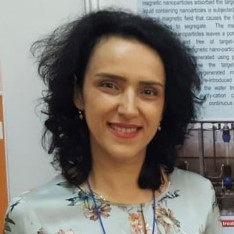Advanced Eco-Technology and Materials in Water Treatment
A special issue of Materials (ISSN 1996-1944). This special issue belongs to the section "Materials Chemistry".
Deadline for manuscript submissions: closed (31 December 2021) | Viewed by 27871
Special Issue Editors
Interests: eco-materials; water treatment; environmental pollutants
Interests: nanomaterials; water treatment; material characterizations
2. Faculty of Material Sciences and Engineering, Politehnica University of Bucharest, 060042 Bucharest, Romania
Interests: nanomaterials; nanostructured composites; nanofabrication; nanomaterial integration; materials engineering; thin films and nanotechnology; surface characterization; electrodeposition; electrochemistry; nanoscience
Special Issues, Collections and Topics in MDPI journals
Special Issue Information
Dear Colleagues,
One of the main challenges in the world is meeting the global water demand, which is constantly growing as a result of population growth, economic development, and changing consumption patterns. The water demand could be balanced by nature‐based (green) solutions or eco-technologies with vital benefits and support for sustainable development. In this context, water could remain one of the most important resources. Additionally, the classical technologies implemented seem to be too old to successfully deal with new concerns, such as water pollution with emerging contaminants such as pharmaceutical residues, inorganics, and microplastics in the wastewater system. All these aspects could be solved using eco-technologies that involve the use of advanced materials with new and improved structures, design, and properties that contribute at a high efficiency of contaminant removal, lower energy consumption, low cost, and maintenance.
This Special Issue will provide new and cutting-edge knowledge on advanced eco-friendly materials based on biopolymers and metal oxides as supports for adsorption, ion exchange, photocatalysis, and other advanced water treatment techniques. Materials’ integration into eco-technologies offers a further environmental advantage under the circular economy concept, as well as through a low carbon footprint.
Prof. Dr. Ecaterina Matei
Assoc. Prof. Dr. Andra Mihaela Predescu
Dr. Ruxandra Vidu
Guest Editors
Manuscript Submission Information
Manuscripts should be submitted online at www.mdpi.com by registering and logging in to this website. Once you are registered, click here to go to the submission form. Manuscripts can be submitted until the deadline. All submissions that pass pre-check are peer-reviewed. Accepted papers will be published continuously in the journal (as soon as accepted) and will be listed together on the special issue website. Research articles, review articles as well as short communications are invited. For planned papers, a title and short abstract (about 100 words) can be sent to the Editorial Office for announcement on this website.
Submitted manuscripts should not have been published previously, nor be under consideration for publication elsewhere (except conference proceedings papers). All manuscripts are thoroughly refereed through a single-blind peer-review process. A guide for authors and other relevant information for submission of manuscripts is available on the Instructions for Authors page. Materials is an international peer-reviewed open access semimonthly journal published by MDPI.
Please visit the Instructions for Authors page before submitting a manuscript. The Article Processing Charge (APC) for publication in this open access journal is 2600 CHF (Swiss Francs). Submitted papers should be well formatted and use good English. Authors may use MDPI's English editing service prior to publication or during author revisions.
Keywords
- adsorption
- ion exchange
- nanomaterials
- metal oxides
- titanium dioxide
- water purification wastewater treatment
- photodegradation
- re-used materials








